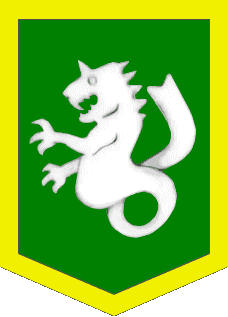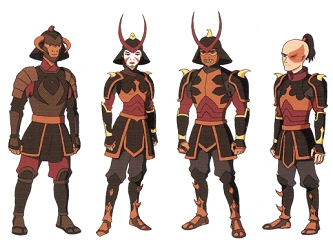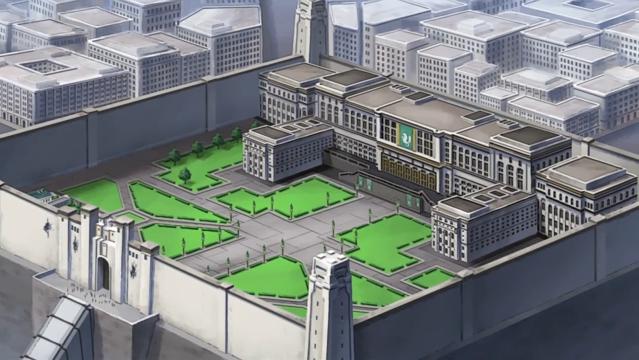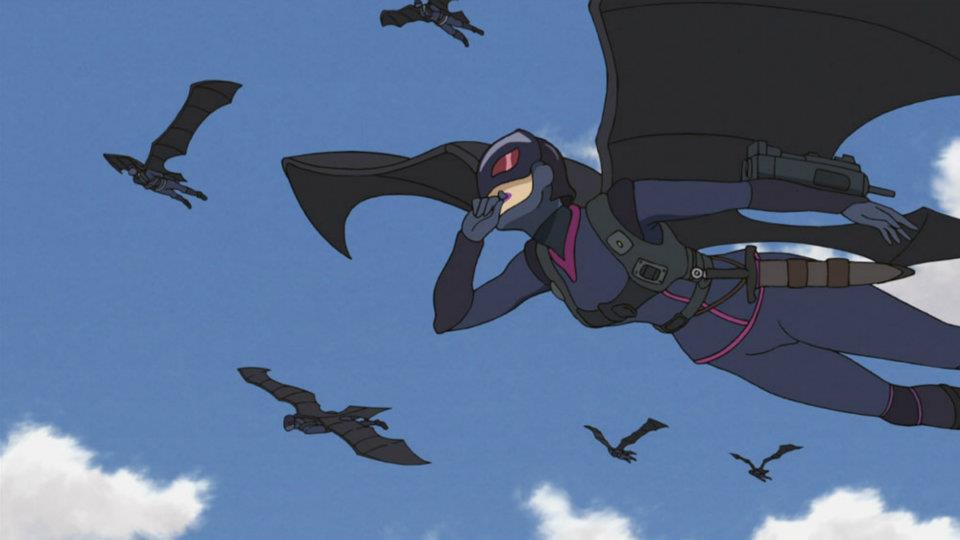| Fire Nation. |
|---|
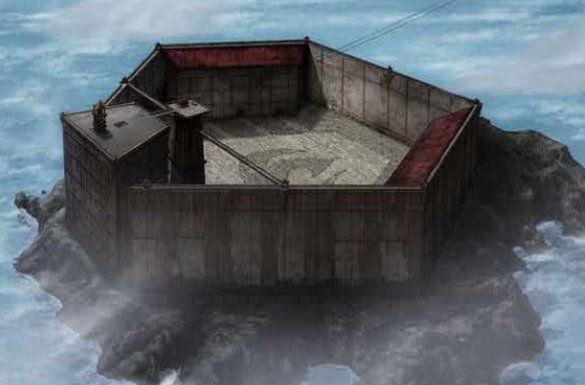 | | Physical Information: |
|---|
| Location: | Jacanna System. |
|---|
| Government: |
|---|
| Capital: | Boil Rock Fortress, Capital City, Fire Islands, western hemisphere. |
|---|
| Form Of Government: | Autocratic absolute unitary directorial Theocratic Monarchy. |
|---|
| Head Of State: | The Fire Lords. |
|---|
| Bureaucracy: | Council Of Fire Sages. Note there is not legislature. |
|---|
| Religious Authority: | Fire Sages. |
|---|
| Currency: | The Ban (coin), rough value 1 Ban to 1 gram of gold. |
|---|
| Ruler: | Izumi: 167 AG to present;Zuko: 100 to 167 AG;Ozai: 95 to 100 AG;Azulon: 20 to 95 AG;Sozin: 58 BG to 20 AG;Zoryu: Unknown to 58 BG;Chaeryu; Unknown;Yosor: Unknown. |
|---|
The Fire Nation is one of the world's four nations and five sovereign states. It is an absolute monarchy led by the Fire Lord and home to most firebenders. Geographically, the nation is located along the planet's equator in the western hemisphere and is composed of several islands, named the Fire Islands. Its capital is simply known as the Fire Nation Capital. The people of the Fire Nation are referred to as "Fire Nationals."The Fire Nation is the second-largest nation in terms of area, following the Earth Kingdom, while its economy is the most powerful in the world; its strong industrial sector and extensive technological developments not only enabled the Fire Nation to create an extremely powerful military, but also initiated worldwide modernization and globalization. Before the foundation of the United Republic and the following global technological revolution, it was also the strongest and most advanced country in the world.The military of the Fire Nation was engaged in an imperialistic century-long war with the other three nations from 0 to 100 AG, during which the country committed genocide against the Air Nomads, conquered vast swathes of the Earth Kingdom, and instituted raids that annihilated the waterbending population of the Southern Water Tribe, save for one bender. The ruler directly after the conclusion of the Hundred Year War, Fire Lord Zuko, used Fire Nation resources to help rebuild the world, start the Harmony Restoration Movement, and eventually create the United Republic of Nations. The Fire Nation Capital is guarded by the Great Gates of Azulon, named after the grandfather of Zuko and Azula, Fire Lord Azulon.Seventy years after the end of the Hundred Year War, the Fire Nation still played a role in world affairs. A representative from the Fire Nation held a position on the United Republic Council that helped govern Republic City and the United Republic in general until 171 AG. The country also plays a part in international military affairs, with General Iroh leading the United Forces, the defense organization of the United Republic.HistoryIn pre-historic times, the people who would eventually become the Fhyre Nation developed into powerful mages, with a significant predilection to machinery, but with a significant number of extremely power mind melters.Nevertheless, several aspects of life and observances practiced by the predecessors of the first Fire Nationals became part of the nation's culture, such as in the use of hybrid pigs as a primary means of sustenance. More importantly, the longstanding desire to conquer and expand into the unknown, such as a failed attempt by several villagers to set up a settlement in the Spirit Wilds, and the development of a warrior culture which depended on central leadership emerged among the predecessors of the Fire Nation. These characteristics continued to remain prevalent as seen during the Fire Nation's imperialistic endeavors in the antebellum period that directly preceded the outbreak of the Hundred Year War.Warlord era of the Fire IslandsAfter Avatar Wan closed the spirit portals, the humans began to wage war among themselves, eventually spreading out across an archipelago in the western hemisphere which became known as the "Fire Islands". One group that inhabited the archipelago was the Sun Warriors civilization which flourished and developed the original firebending techniques from dragons, but eventually went into hiding due to war, leaving a great cultural and architectural influence on the later Fire Nation. The other disaggregated states of the Fire Islands were controlled by warlords, who regularly engaged in conflict for territory. Among these warlords was Toz, who was renowned for mandating annual tributes from all of the villages under his control.Toz's policies were harsh and brutal, even once involving the abduction of children from a village that refused to provide him with offerings. This resulted in the deaths of the mothers from the village who returned to the mortal realm as dark spirits that became known as the Kemurikage, who haunted and abducted children from Toz's encampment until his regime collapsed. The spirits continued to haunt the warlords until one individual took control and brought the warlords to justice. He also united the Fire Islands into a single political unit and eventually became to be known as the first Fire Lord, the leader of the Fire Sages, descendants from the Bhanti. Some warlords were allowed to maintain some power, however, and their families eventually transformed into the Fire Nation's noble clans. At some point, the Fire Lord split from the Fire Sages, assuming political power for himself, changing the Fire Nation's religious rule into an autocratic empire ruled by his family.The history of the Fire Nation from inception was documented extensively by the Fire Sages, who commissioned an ever-growing mural in the corridors of the Dragonbone Catacombs, which also served as the burial sites for all of the deceased Fire Lords. Along with the murals, numerous scrolls detailing the recorded history, personal accounts, and myths of the Fire Nation were also placed along the corridors, pertaining specifically to certain subjects in the nation's past, such as the unification of the Fire Islands by the first Fire Lord and the origin of the Kemurikage.Prosperity and progress amid strifeFollowing its unification, the Fire Nation became one of the most powerful and advanced countries in the world. The citizens developed to be resourceful and resilient, a trait that was later speculated by Iroh to be a result of living on islands dominated by active volcanoes. Its politics remained very complex and full of conflict. Even though the Fire Lords held great power and controlled a standing military, many islands retained distinct identities and remained somewhat autonomous. They fiercely guarded their resources and were often unwilling to share with other parts of the Fire Nation, let alone the central government. The noble clans also retained private armies as result of them descending from the old warlords. Bloody feuds between clans consequently were a common occurrence in the Fire Nation, binding energy and resources. The Fire Nation's government was also marked by strife and conspiracies, as the members of the royal family feuded in the quest for power. Several dynasties rose and fell, and recurring civil wars over often pitiful issues plagued the country. Regardless, the urbanization and cultivation of the Fire Nation steadily progressed. During the rule of the Pho Zel Dynasty, the komodo rhino was first domesticated, remaining the primary beast of burden in the Fire Nation until industrialization after the Hundred Year War.The Fire Nation came close to complete destruction during the rule of Fire Lord Yosor, when plagues and natural disasters destabilized the country and caused great tensions. As the common people struggled for survival, the noble clans took up arms and clashed over resources; the central government was unable to bring the chaos under control. The Fire Nation factually fractured into semi-independent regimes, and many feared that the ancient warlord era was starting anew. However, complete anarchy was averted by Avatar Szeto who stepped in and became a minister in the Fire Nation's government. Working in tandem with Yosor and other officials, he restabilized the country, brokered peace deals between the clans, helped to reform the central government to make it more effective, and improved the economy through monetary reforms as well as relief programs for farmers in times of famine. The Fire Nation consequently emerged strengthened from this period of intense crisis.Avatar Yangchen traveled to the Fire Nation, where she made a new pact between humans and the phoenix-eel spirits that lived in the caverns under Ma'inka Island. She was greatly respected in the Fire Nation, as she was in all nations. However, the humans disrespected the terms of the agreement, and the spirits turned dark. Avatar Kuruk was forced to hunt and destroy the dark spirits years later.Despite the Fire Nation's involvement in many wars, it experienced relative peace since the 4th century BG.
Despite this period of peace, the Fire Nation's military continued to develop numerous contingency plans for all kinds of conflicts, ranging from a civil war to invasions of the Earth Kingdom and Water Tribes. The powerful noble clans also continued their feuds, and some of them even hoped to take over the central government itself.
The Camellia-Peony WarIn the time of Avatar Kuruk and the years after his death in 312 BG, the Fire Nation was stable and relatively prosperous under the rule of Fire Lord Chaeryu. The nation experienced bountiful harvests and catches of fish, and the economy thrived. Regardless, Chaeryu was responsible for growing tensions in the country, as he fathered two sons by dfferent women: his illegitimate firstborn, Chaejin, by Lady Huazo of the Saowon clan, and his official heir, Zoryu, by Lady Sulan of the Keohso clan. Supported by his leading ministers, Chaeryu factually ousted both Chaejin as well as Huazo from the royal family to allow Zoryu to become the next Fire Lord. In 304 BG, the Fire Nation's leadership struck a secret deal with the influential Earth Kingdom sage Jianzhu. According to this agreement, the latter did not execute Xu Ping An, leader of the Yellow Neck uprising, and allowed the Fire Nation to study the rebel due to his almost extinct ability to generate lightning.Fire Lord Chaeryu eventually passed away, and his son Zoryu came to the throne. Contrary to the court's expectations, however, Huazo had proven to be a highly capable politician and administrator who gradually strengthened the Saowon clan, while Chaejin won the Fire Sages' support. Zoryu's rule was thus unstable, as Huazo and Chaejin used their resources to delegitimize him. The developing succession conflict later became known as the "Camellia-Peony War". In addition to the political unrest, the good harvests came to an end, and the fisheries declined under Zoryu's early rule. Many territories of the Fire Islands, with the capital and Huazo's lands being notable exceptions, fell into crisis and poverty. Although weakened, Zoryu's regime remained in power due to the steadfast support by the Keohso clan and aid by Jianzhu.Despite the internal crisis, the Fire Nation continued to involve itself in international affairs. After the Fifth Nation pirate fleet was defeated in 296 BG, the Earth Kingdom allowed the Fire Navy to patrol the Eastern Sea to restore order in the area and rescue people who had been kidnapped by the pirates. After Kyoshi was revealed as the true Avatar, a Fire Nation envoy visited Yokoya and observed her bend each of the four elements. After recording Kyoshi's success, the minister returned to the Fire Nation the following morning to report the new state of affairs.In 295 BG, Fire Lord Zoryu invited Avatar Kyoshi to the Fire Nation to celebrate the Festival of Szeto, hoping to settle some of the unrest in the court. Instead, the Avatar's diplomatic inexperience resulted in damage to Zoryu's authority, while a surprise raid by Yun at the palace led to the death of the loyal Chancellor Dairin and a weakening of the central government. Many nobles were outraged about the attack, some even wishing for war with the Earth Kingdom. Kyoshi attempted to solve the crisis and apprehend Yun, while tensions between the Saowon and Keohso began to escalate into open violence at North Chung-Ling. Meanwhile, Zoryu hatched a plot to disempower his opponents by blaming the Saowon for Yun's actions, and successfully purged them. Although he intended to just kill the entire clan, including Chaejin and Huazo, he was forced by Kyoshi to spare them. Regardless, Zoryu came to the conclusion that the Camellia-Peony War had showcased that the noble clans had too much power. He consequently initiated a generational project in which the next Fire Lords would gradually destroy the clans' influence until the royal family would rule the Fire Nation autocratically.Growing might of the Fire Lords and industrial revolutionZoryu's project succeeded, as the Fire Lords amassed more and more power during the next two centuries until becoming virtually unchallenged autocrats. The first Fire Nation colonies, established before the war, formed the basis of the Fire Nation's later continental empire.Unlike the Earth Kingdom that went into decline following the War of Chin the Conqueror, the Fire Nation entered an era of great prosperity and modernization. It eventually became the most technologically advanced country in the world, triggering an industrial revolution. The Fire Nation became very prosperous, excelling in trade and commerce, while also maintaining a powerful military. Avatar Roku and Crown Prince Sozin were born into this time of progress. As the Avatar, Roku became a force for balance and peace in the world, while Sozin believed the prosperity of the Fire Nation should be shared with the rest of the world, dreaming of a global empire under his rule. These ambitions led the Fire Lord to initiate a number of reforms that militarized the country. He greatly expanded the country's already powerful army and navy, and both spirituality and respect for life rapidly declined as a result of his policies, leading to the near-extinction of the dragons and the brutalization of the Agni Kai. Eventually, several colonies were established in the weakened Earth Kingdom, which in turn quickly became local industrial centers. Sozin's expansionism was finally stopped by Roku, though the Avatar allowed the Fire Nation colonists to stay in the Earth Kingdom. After Roku's death in 12 BG, Sozin resumed his politics.Imperialism and the WarSozin began the Hundred Year War, while transforming the Fire Nation into a militarist autocracy.With the coming of Sozin's Comet that greatly enhanced firebending, Sozin launched his attack on the air temples in hopes of killing the next Avatar, Aang. Even though the Air Nomads were completely annihilated, the Avatar could not be found and disappeared. The Fire Nation moved on to the Earth Kingdom, conquering much of its northwestern territories. At this point in time, Sozin sealed the historical corridors of the Dragonbone Catacombs, as to give the appearance that the nation's history began with his reign. Given that the entire wing of Wan Shi Tong's Library dedicated to the Fire Nation was also unavailable, the restriction of the catacombs meant that very little information regarding the nation's past was accessible apart from information released by the state. The government also issued educational reforms to ensure that young citizens developed a strong sense of patriotism and were properly indoctrinated to the nation's political agendas. For instance, historical textbooks were heavily censored or modified to justify the Fire Nation's war efforts and courses that provided opportunity for personal expression were removed from the curriculum as they were potential threats to the Fire Lord's unquestioned authority. Many Fire Nation cities grew greatly during the war due to modernization and industrialization.After Sozin's death, his son Azulon took the throne and continued his father's policies. The Fire Nation built a global empire, subjugating most of the Earth Kingdom and the former Air Nomad territories. The resources of conquered lands were used by the Fire Nation for further industrialization and extensive technological developments, such as railways, steamships, and airships, making the Fire Nation the most advanced nation of the world. At the same time, an ethnocentric ideology prevailed among the military and nobility, resulting in the abandonment of Sozin's idea of "sharing" prosperity in favor of imperialist ambitions. In line with these policies, the Fire Sages that had remained loyal to the Avatar were executed on Azulon's orders. The ancient order was placed under government supervision, subverting it into little more than an aging remnant of a time where spirituality was placed before military might.The process of expansion and militarization continued and the mass buildup of industry greatly increased toward the end of Azulon's reign. Even though many cities flourished as a result, the growing environmental pollution led to the rural population's impoverishment in some places. His successor, Fire Lord Ozai, continued these politics. His reign saw significant technological advancements, the fall of the Earth Kingdom, and the reemergence of Avatar Aang. The Avatar's intervention eventually led to the Fire Nation's defeat and Ozai's deposition in favor of his son, Zuko, marking the end of the Hundred Year War.Cooperation and harmonyAfter Ozai's imprisonment, Fire Lord Zuko began the long process of reconstruction. Under his rule, the Fire Nation resumed cooperation with the other nations to ensure world peace and prosperity. The traditionalist Shyu was appointed new Great Sage, and under his supervision, the Fire Sages relinquished their loyalty to the Fire Nation government and returned to their spiritual and theological roots. These new policies, especially the demilitarization and decolonization, met the opposition of Fire Nation colonists and imperialists that began to escalate into violence by 101 AG. To solve the crisis caused by the decolonization, Fire Lord Zuko, together with Avatar Aang and Earth King Kuei, transformed the oldest Fire Nation colonies into the United Republic of Nations, ending the Fire Nation's imperialist era while at the same time allowing Fire Nation colonists to remain in their new homelands. Aang Memorial IslandAang Memorial IslandThe Fire Nation commissioned the massive statue of Aang Memorial Island as a symbol of peace and goodwill after the Hundred Year War.On the other side, imperialist agitation culminated in the insurgency of the New Ozai Society, a militant reactionary organization that sought to reinstate Ozai as Fire Lord. In the end, however, their attempt failed, and Zuko remained Fire Lord for more than sixty years. He used his nation's resources to help rebuild the Southern Water Tribe, resulting in long-lasting good relations between the latter and the Fire Nation. Furthermore, the massive statue of Aang Memorial Island in Republic City was commissioned under his rule as a symbol of peace and goodwill. Zuko relinquished the throne to his daughter, Izumi, in 167 AG, under whom the Fire Nation aided the United Republic against the Earth Empire. Under Izumi's reign, the Fire Nation has maintained a strict non-aggressive policy when it comes to foreign affairs, rejecting its imperialist past and would only commit to war if left with no other alternative.AppearanceBeing the second-largest nation, there is a minor degree of physical diversity among members of the Fire Nation. Its citizens tend to have black or brown hair, often styled in a bun or ponytail. Their eyes are usually golden, amber, or bronze in color, with brown and gray as rare alternatives. The people often have light skin tones, though many poorer citizens have darker complexions.Traditional colors worn throughout the nation range from vibrant reds and yellows to more muted browns and black. Members of the army wear red, black, and brown uniforms.National Emblem
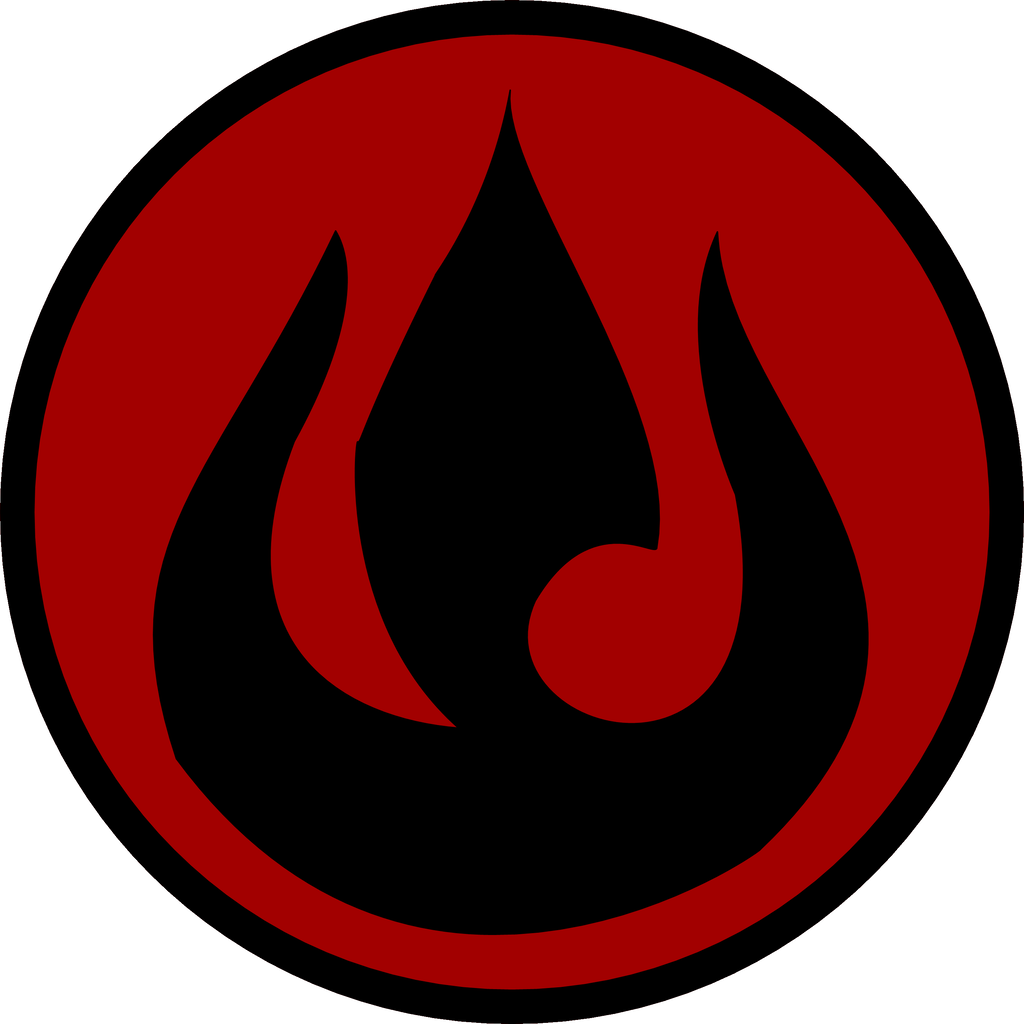 | | The Emblem/Flag Of The Fire Nation. |
|---|
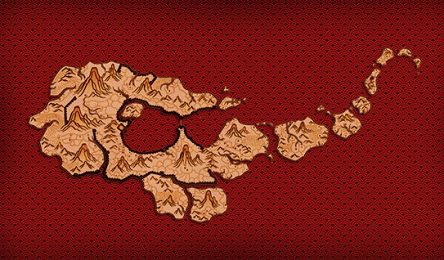 | | Map Of The Island Of Boiling Rock, Capital Of The Fire Nation. |
|---|
The national emblem of the Fire Nation is a stylized, teardrop-shaped flame forked into a trident of three tongues that taper upward to a point. The insignia is primarily displayed on its flag, uniforms, on the pennants of Fire Navy warships, the sides of their various vehicles of war, and as marking of Fire Nation territory. The Fire Nation Royal Family and certain higher members wear the emblem in their top-knots. Princess Azula, Fire Lord Sozin, Fire Lord Azulon, Avatar Roku, Fire Lord Ozai, Fire Lord Zuko, Prince Lu Ten, and Princess Ursa have been seen wearing them.The Fire Nation flag is a triangle-shaped banner with the stylized flame insignia at its center. Six thin stripes extend from the slanted edge.Fire Nation currency consists of gold, silver, and bronze pieces of varying shapes and sizes used by Fire Nationals to purchase goods and services and are fashioned with the national emblem situated in the center.Geography
The Fire Nation is located on an archipelago of tropical volcanic islands called the Fire Islands, many of which are still active and provide the nation with an unlimited source of power. The two bigger and main islands are Capital Island and Shuhon Island. Because of a warm and humid climate, the Fire Nation is home to a variety of native flora and fauna, though the main islands largely consist of rough, grassy plains bearing little wildlife. Few travel to the Fire Nation, and no invasion had ever been mounted against it until Team Avatar and some of their allies from the Earth Kingdom and Water Tribe attacked the mainland during the Day of Black Sun in 100 AG.The population of the Fire Nation is mostly concentrated in urban centers, though smaller settlements, villages, and towns dot the landscape as well. The capital city is on the largest island, situated inside the crater of a large volcano. There are also many industrial establishments where weapons, tanks, and warships are built to support the war effort.Natural ResourcesThe Fire Nation employs highly skilled metalworkers and blacksmiths who make use of iron and other metals to engender their fortresses and warships. Utilizing coal dug out by prisoners slaving in mines, they are able to power massive industrial furnaces and war machinery. The initial drive for the nation's attempts for expansion was industrialization and having a greater need for resources, in itself a staple of imperialism.Furthermore, the Fire Nation has profited greatly from the volcanic soil that dominates its islands, as it is very fertile. As a result, the country possesses a flourishing agricultural industry.Rich deposits of natural gas are found in areas like Fire Fountain City.GovernmentGovernment System: Autocratic absolute unitary directorial Theocratic Monarchy.Head Of State: The Fire Lords.Bureaucracy: Council Of Fire Sages. Note there is not legislature.
Religious authority: Fire Sages.The Fire Nation was initially led by a council of sages. These sages were heavily invested in philosophy and spirituality, much like the monastic Air Nomads. The lead sage was known as the "Fire Lord." Eventually, one Fire Lord broke from his peers and became sole ruler of the Fire Nation, enacting a line of succession and relegating the other sages to spiritual concerns. The sages nonetheless retained some political power, and tensions occasionally flared between the two. The position of High Sage was created to replace that of the former Fire Lord and the position of Great Sage is used to denote the head of a fire temple.Over time, the Fire Lords amassed more and more power, and increasingly ruled through intimidation. The political dispute between the sages and the Fire Lords finally culminated following Sozin's ascension to the throne. While Avatar Roku was still alive, the sages remained loyal to him, keeping watch over his sanctuary and obeying his commands. However, following the death of the Avatar, the sages were ultimately forced to submit to the Fire Lord's rule and to serve him alone as spiritual advisors.During the Hundred Year War, the monarchy took on an absolutist character. This was exemplified by Azula's statement that "true power, the divine right to rule, Throughout the war, the Fire Nation was not above employing genocide to accomplish its goals of total domination. They eliminated the entire nation of Air Nomads, drove the Southern Water Tribe to the brink of extinction, and began the process of colonizing the Earth Kingdom. With the fall of Ba Sing Se, it seemed almost inevitable that Ozai would succeed, and he crowned himself the Phoenix King, ruler of a global empire. His triumph, however, would only last two days.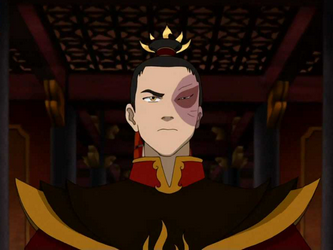 | | Fire Lord ZUKO. |
|---|
Following the defeat of Phoenix King Ozai at the hands of Avatar Aang, Fire Lord Zuko rose to power and ended the century-long war. He dismissed the members of Ozai's cabinet and ended his policies. Zuko dedicated his reign toward rebuilding the four nations in a new era of peace and has thereafter been considered a benevolent ruler. He attempted to change the Fire Nation's traditional form of government to one less dominated by fear. During this time, the loyalty of the Fire Sages reverted to the Avatar.Currency:The Fhyre curreny, called the Ban, is based on coins. They vary by weight, size, and shape, though all have the nation's emblem on one side and writing on the other. Fire Nation coins suffered from debasement during the time of Fire Lord Yosor, but their value was restored through Avatar Szeto's economic reforms. They Fire bear the national insignia and come in three denominations:Copper PiecesThe copper piece is the least valuable coin in the Fire Nation. It is a rectangle with two concave sides and a small image of a flame in its center. Silver PiecesThe silver piece is the smallest and second most valuable coin in the Fire Nation. It is pentagonal in shape with the national emblem on its front.Gold PiecesThe gold piece is the longest coin in the Fire Nation and is mostly rectangular in shape with a long slit running from its base to slightly below its top. Consisting entirely of gold, these pieces are the most valuable coins in the Fire Nation.
IndustryIn compliance with its war effort, the Fire Nation was heavily engaged in industry during the Hundred Year War. The country's economy was dominated by shipbuilding, metalworking, and manufacturing weapons such as arrows, spears, shields, swords, and knives. Despite a crude range of weaponry, the Fire Nation stood as the most technologically advanced belligerent in the War. Its comprehensive knowledge of combustion allowed them to develop several Industrial-Age technologies including advanced metallurgy, tanks, rudimentary explosives like blasting jelly, sophisticated catapults, siege drills, and coal-powered ironclad warships. Some of these innovations were commissioned by extorting an expatriate Earth Kingdom inventor, the mechanist.EducationThe Fire Nation has had a formal education system as early as the lifetime of Szeto. School is hardly ever canceled, with at least one notable exception being the revelation of a new Fire Avatar.During the Hundred Year War, the education system aimed to instill loyalty in its students through political indoctrination, strict discipline, and nationalist teachings. Students in certain schools began the educational process as soon as they began firebending, or for nonbenders, as soon as they began walking. Subjects including history, music, etiquette, warfare, and firebending were taught to the students by various teachers. However, the educational system primarily worked as a "mind-molding" process, influencing students to develop a strong sense of nationality and loyalty to the Fire Lord. Teachers maintained rigid order and withheld teaching students the art of dance or any other form of self-expression. In addition, censorship and propaganda were used in history books, such as falsely claiming the Air Nomads used military force to fight the Fire Nation.CultureThe dress code and symbols of the Fire Nation are modeled after fire, naturally. Like the other nations, it is based on its elemental color, in this case, red. The majority of the structures are made of stone. They also have red pagoda-style roofs favored by the country. Fire Nation symbols are often put on important or nice buildings for decoration and inside it was common for a picture of the Fire Lord to be kept in a prominent, visible place.The Fire Nation oath is a characteristic and important cultural element, demonstrated by its teaching to children in schools with demureness and recited thoughtfully. The oath was written at the beginning of the War and commissioned by Fire Lord Sozin. It is titled "The March to Civilization".Many names of Fire National utilize harsh consonants like the letter "Z", including Zuko, Ozai, Azula, Sozin, Zhao, Azulon, Kuzon, etc. Though interestingly enough, Piandao did mention to Sokka that there are "a million Lees" when aiding him in choosing an alias.General opinion of the worldThe Fire Nation's worldview upholds that only unity, centralism and strict order can ensure stability and prosperity. This does not include restricting freedom and creativity, as these aspects of personal expression are critical to societal development and harmony; however, children do not gain this freedom until they have been taught how to improve the Fire Nation with their actions, and the honor it brings them. These ideas are instilled from an early age.Nevertheless, this original view was corrupted during the Hundred Year War in order to fit the Fire Lords' ambitions. The idea of a peaceful, harmonious and cooperative world order was changed into an imperialist ideology that propagated global domination and striving to achieve it. Children were taught that the Fire Nation was the greatest civilization that had ever existed, that the war was its way of sharing its greatness, along with the ideology that the Fire Lord and his family were great people who were helping the world.This caused a cult of personality to build up around the Fire Lord, military, and aristocracy, who were seen as messengers that could bring the beauty and glory of Fire Nation culture to other lands. According to this belief, the Fire Nation Royal Palace was the center of the world, and the further away a place was from the palace, the lower were its inhabitants in regard of social status and capabilities. This led to discrimination; Fire Nation citizens of the mainland were regarded superior to those of the colonies, while the people of other nations, as well as their bending, were deemed barbaric and inferior. As result, Avatar Aang once described the Fire Nation's society as "aggressive".However, under Fire Lord Zuko's rule, the original impression of the world was restored and the Fire Nation began once again to cooperate with the other nations to ensure world peace and prosperity. The most significant result of this cooperation is the creation of the United Republic and its capital, Republic City.CustomsFire Nation society places a great emphasis on respect and honor, especially toward the nobility and elders; the concept of the famed Agni Kai stems from these beliefs. Should one be honored enough to be in the presence of a member of the Royal Family, that person needs to prostrate themselves in respect or risk being challenged to an Agni Kai to avenge the disrespected Royal's honor. Upon coming into contact with an elder or superior, it is polite to bow down. Unlike in other parts of the world, this bow consists in placing a hand in a straight fashion with the other being fisted placed underneath it vertically. This represents the superior standing with one below him, bowing. Also when receiving an order in the Fire Nation by a superior it is common to not bow, but make the hand symbol. Bowing is required upon greeting to one, when something nice has happened, after business, and leaving.The Fire Nation's concept of honor was closely connected to outward appearance. By Avatar Kyoshi's time, this resulted in the special status given to one's hair. Hairstyles could signify one's status, and noble families afforded hair an almost sacrosanct status. It was unseemingly for lower-status individuals to touch the hair of a higher-ranking person. Losers of Agni Kais often shave parts of their head bald to signify humility. The greatest importance is accorded to one's top-knot; changing it is a common way for Fire Nation nobles to signify one's loss of honor. To completely cut off the top-knot is an extreme act and done in "circumstances akin to death". Most notably, Zuko and Iroh cut off their top-knots upon being forced to become fugitives.Gender equalityThe Fire Nation is well known for its long tradition of gender equality. There are hardly any occupational boundaries for women. They have full access to higher education and are equal before the law, thus, women can also become mayors, and magistrates, thereby occupying the highest-ranking civilian positions in most of the nation. Likewise, a Crown Princess or female Fire Lord is not uncommon, and historical sagas about Fire Princesses just as powerful and feared are well known.By the time of Avatar Kyoshi, this gender equality extended to the Fire Nation military which included women soldiers, some of whom rose to commanding officers. At some point before 99 AG, this freedom was restricted, and common women, firebender or not, were no longer allowed to serve in the army or navy. Instead, they were mostly restricted to service in the Domestic Forces. Nevertheless, exceptions to this rule were known, as women served in special front units such as the Yuyan Archers during the Hundred Year War, and it remained normal as well as expected from a Fire Princess to take an active part as a military commander. The restrictions on women serving in the regular military were lifted after the Hundred Year War's end.Relationships, marriage, and family lifeFire Nation society is dominated by nuclear families, usually consisting of two parents and a modest number of children. In regards to familial roles, it is common for both parents to work, though one-income families also exist. For heterosexual couples, it is also usual that the mother is the one primarily responsible for raising the children. Fire Nation mothers have a reputation as being fiercely strict yet also loving. Nevertheless, most Fire Nation fathers take an active role in their children's upbringing.Most Fire Nation couples who decide to form a long-term partnership opt for marriage. Within the Fire Nation, marrying for love is more prevalent than arranged marriages, even among the nobility, as only the royal family is known to conduct marriages of political convenience. Among both the nobility and the common people, a wedding is traditionally an extensive, celebrated event. Attendees wear formal garments, with women favoring red-and-white gowns, though those worn by nobles are far more elaborate and expansive than those of the commoners. There is an even greater difference among grooms, with nobles favoring expansive red-and-black clothing while commoners wear red-and-white attire similar to their brides. Large-scale decoration, including lanterns of flowers, and a banquet are typical for weddings. The wedding itself is generally presided over by either a Fire Sage or a village elder, though the Fire Lord also has the power to preside over or officiate a marriage, as was the case when Sozin served as both officiant and best man at Roku and Ta Min's wedding. There are no known legal restrictions or societal disapproval for people who decided to terminate their marriage or separate from their partners without doing so.Though the Fire Nation had a long-standing history of tolerance toward same-sex couples, such relationships were declared illegal under Fire Lord Sozin's reign.Cult of personalityThe Fire Nation has a long tradition of reverence and respect for authority figures. By the 3rd century BG, however, obedience was not reserved to the Fire Lord, as clan heads and the Avatar were also highly regarded. Fire Lord Zoryu was the country's first known ruler who hoped that one day all Fire Nation citizens would become loyal only to the Fire Lords. This dream was fully realized under Sozin, Azulon, and Ozai, when the Fire Nation developed an intensive and excessive cult of personality for the Fire Lords. It became common to keep pictures of the Fire Lord clearly visible in schools and public buildings, while massive statues were erected in honor of the ruler. This was accompanied by strong glorification, although the monarchs were still regarded as humans – unlike the Earth King, who was said to be "an icon, a god to his people" at the time. Fire Lord Zuko reined in the personality cult's most extreme aspects, going so far as to publicly admit mistakes and allow criticism of his policies.FoodsThe diet of its citizens consists of noodles, meat, fish, rice, cabbage, tea and lychee nuts. The people are also known for having a taste for foods of a spicier fare, as they enjoy flaming fire flakes, fire gummies, sizzle-crisps, and fire cakes. As the Fire Nation is a hilly island country, pasture is more common than farmland, thus most Fire Nation dishes are rich in meat, while there are very little vegetarian meals. Tea is generally popular, as there is even a National Tea Appreciation Day. The tea most commonly drunk in the Fire Nation is spiced tea.TheaterFire Nation theater has a long history and is popular within the country, as both high-class citizens and peasantfires often attend plays in their free time. One of the most famous and popular theater plays is Love amongst the Dragons, which is performed annually at many places in the Fire Nation, ranging from high-society resort islands like Ember Island, to poor backwater villages like Hira'a. Becoming an actor or an actress is a respected profession, even though some acting troupes are not highly regarded due to their regularly poor performances. Despite great artistic freedom, the theater was also utilized to serve Fire Nation propaganda during the Hundred Year War; for example, the play The Boy in the Iceberg from an Earth Kingdom writer about Avatar Aang was allowed to be performed, but only when the ending would show the Fire Nation's total victory and Aang's death.Cultural festivalsThe traveling "Fire Days Festival", alternatively called simply the "fire festival", was a Fire Nation-sponsored event that brought Fire Nation culture to its citizens forced to live away from their homeland. This event traveled to Fire Nation occupied areas of the Earth Kingdom, staying for a few weeks at a time at each location. A variety of Fire Nation people attended the festival, from soldiers on leave, to civilians living in occupied territory. Its participants wore stylized hand-carved wooden masks similar to that of Kabuki theater masks, and merchants vended a wide variety of trinkets and local snacks. The festival's attractions included puppet shows, fireworks, firebending jugglers and magicians, and overall displays of individual or group bending prowess. As illustrated in its cultural festivals, the Fire Nation employed propaganda to indoctrinate a sense of nationalism and loyalty to the Fire Lord, cult of personality, in its citizens from the earliest age possible; a popular attraction cast Ozai as a hero in a children's puppet show.The Festival of Szeto is an important celebration in the Fire Nation, celebrating the life and accomplishments of the famous Fire Avatar. Lanterns are lit across the capital, Agni Kais are banned, and traditional foods such as stalknose mushrooms and melonyams are eaten.During the summer months around August, numerous "Fire Lily Festivals" spring up around the Fire Nation to celebrate the flower's blooms, famed as a symbol of fiery passion, and persist throughout their short blooming season.Another famous celebration occurs when the Fire Sages announce the identity of a new Fire Avatar; special foods such as spiral-shaped noodles are eaten and school is canceled for the day.Twin Sun Day is another important festival to the Fire Nation.SeasonEach nation of the four nations is influenced by their own distinct, dominant season. The Fire Nation's season is summer. Firebenders' powers are slightly enhanced due to the increase in temperature. Most firebending children are born during the summer.
MilitryThe Fhyre Nation uses a combined militry, much like the model of the T'sentraedi, who’s primary duty is maintain order over the people (to prevent uprising). As a result, there is no difference between the Army, Police, and Corrections; A soldier might be assigned to patrol the streets of a small village, the front lines in the war with Amestris, or Boiling Rock Prison (in increasing order of danger).During the Hundred Year War, the Fire Nation militry was the strongest of the four nations. Using a fiery comet that greatly enhanced their powers, they succeeded in wiping out the Air Nomads early in the War, and though the Fire Nation fought on two fronts against the Southern Tribes and the Western Kingdom, they still maintained the upper hand. As the war dragged on, it became clear that the Fire Nation would eventually win; the Southern Tribe did not have the military might to directly challenge the Fire Nation, and the vast Western Kingdom had lost its last great militry stronghold to the Fire Nation. Both nations sued for peace, which they received, but under painful terms. The Captain of the Southern Tribes was incarcerated at Boiling rock Prison, but his family was allowed to live- In destitution. The King of the Western Kingdom was locked away in his castle, but his family was spared any further humiliation.ArmyThe Fire Army is comprised of both benders and normal foot soldiers, who normally wield a rifle and shield, though they are often issued a short sword bayonet. The Fire Nation also has tanks units, though these are generally inferior to Amestris Army tanks. These tanks are heavily armored and equipped with fire ports to allow the crew to fire, ranging from fireballs produced by bending to guns to giant grappling hooks.The act of dressing up prisoners of war as soldiers to provide fodder was a tactic employed by the Fire Army during the Hundred Year War. One of the generals suggested sacrificing a novice division of troops to provide a distraction.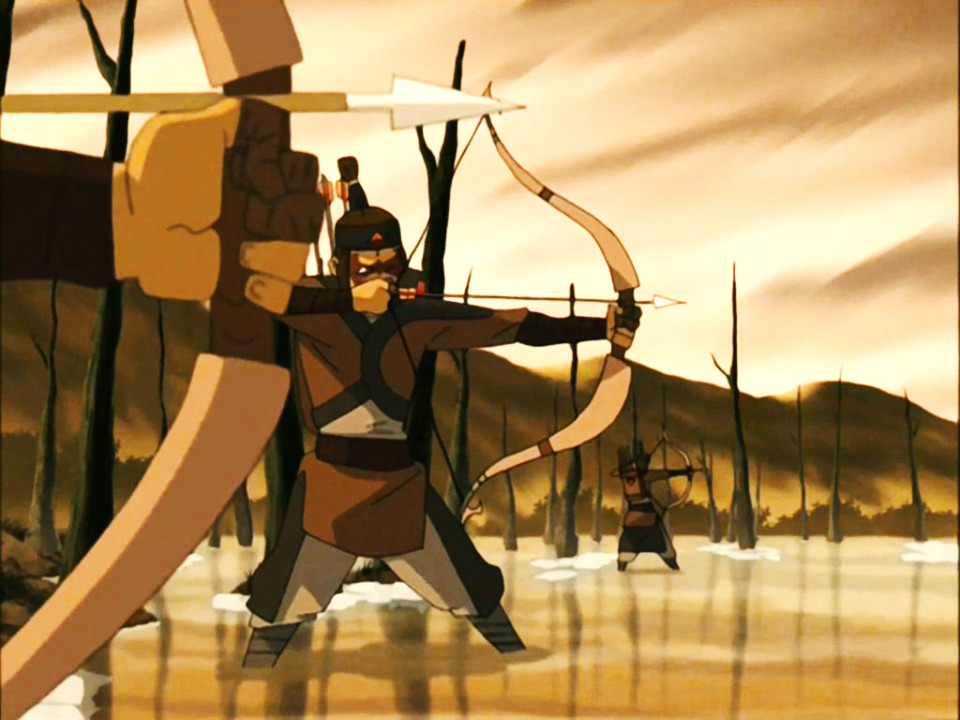 | | Yuyan Archers. |
|---|
Yuyan ArchersThe Fyhyre nation uses specialist archers, originally formed by Colonel SHINU'S as the Yuyan Archers. They are a highly skilled unit and are, according to ZHAO, capable of "pinning a fly to a tree from one hundred yards away without killing it." They perform special operations where stealth is particularly desirable. All candidates the Yuvan Archers must be extremely strong mages, able to imbue their arrows with fire.During the Hundred Year War, captured Western Kingdom benders and prisoners of war were forced into labor to work on Fhyre Nation militry depots. Knowing that they could not bend the metal of the rig, many of the captured Western Kingdom prisoners lost their will to fight- Many would commit suicide to "escape."The Southern RaidersThe Southern Raiders are comprised of an elite force of vessels and soldiers tasked with launching the numerous raids on the Southern Tribe and the Western Kingdom. Their insignia is a sea raven and their uniforms are slightly different from conventional Fire Nation armor, as they are mostly black and consist of a helmet with bird-like ornaments. The goal of the Southern Raiders was to eliminate all benders from the Southern Tribe, as well as stealing supplies for the Fire Nation and devastating the coastlines of the South Sea. The unit was disbanded after the conflict.
Notable Locations: |

